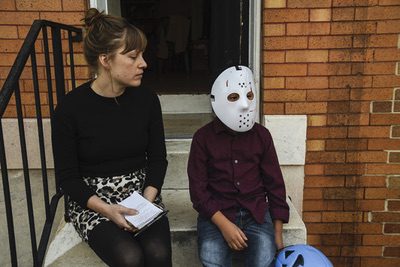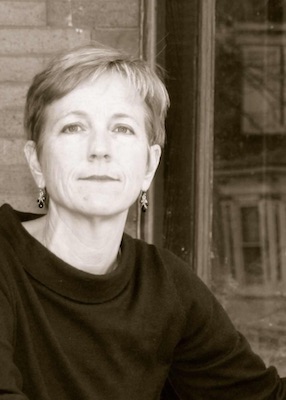
7 in the City
Project
A Multimedia Journalism Project
“7 in the City” is a multimedia journalism project that explores what it is like to be a 7-year-old growing up in Baltimore today.
In the Fall of 2017, Johns Hopkins University students fanned out across Baltimore to interview some of the city’s children about their lives. Spending hours, weeks, sometimes months talking to the children, the reporters documented—in print and video—the 7-year-old’s view of life with their family, their community, and the world.
7 in the City
1.
I write this on the eve of Elijah Cummings' death on October 16, 2019.
A little over two months ago, President Donald Trump and Elijah Cummings, the Congressman whose district includes much of Baltimore, had a war of words about this city. Although, “war of words” is probably not quite right; grenades were only being flung in one direction (Baltimore) by one of the participants (Trump).
As readers may recall, Rep. Elijah Cummings was chair of the House Committee on Oversight and Reform, which was investigating the president when the tweet hit the fan in July. Trump sneered that Baltimore was a “disgusting, rat and rodent infested mess,” called it a “very dangerous & filthy place,” and insisted that “No human being would want to live there.”
This de-humanizing was not new to Elijah Cummings.
2.
Four years earlier, on April 27, 2015, Rep. Elijah Cummings spoke at Freddie Gray’s funeral.
Freddie Gray had died in police custody from a severe spinal cord injury, and tensions were running high in Baltimore. Elijah Cummings was determined to humanize Freddie Gray, to remind people that he was someone’s child, to appeal to the adults, the grownups, the parents in the room.
“You brought him home,” he said, as he stood at the podium and addressed the congregation. “You played with him. You watched him grow. You heard the first time he read something. And maybe you went and told your mama, ‘Wow, that boy can read!’” Then Cummings made reference to the police surveillance cameras that proliferated, more common than trees in some of our poorest neighborhoods. “As I thought about the cameras, I wondered, did anybody recognize Freddie Gray when he was alive?”
Cummings demanded: “Did you see him?”
“Did you see him?”
“Did you see him?”
3.
Cummings’ words haunted me. How do we make people “see” across the dividers of neighborhood, race, class, ethnicity? How do we draw on commonalities, acknowledge differences, rise up in righteous indignation at the disparities in resources?
In 2017, along with Baltimore filmmaker Matt Porterfield and photographer J.M. Giordano, I decided to work with Hopkins students to “see” these children, to investigate what it is like to be seven years old in Baltimore City today, to walk in their sneakers, to tell their stories—and to share these portraits by creating a multimedia website called 7 in the City.
The idea is borrowed from British documentary filmmakers Michael Apted and Paul Almond, who began a similar project in Britain in 1964 as a way of looking at how class colors children’s aspirations, health, and access to resources. The 1964 film, “7 Up!” took as its premise the Jesuit saying, “Give me a boy until he is seven, and I will give you the man." In that documentary, the director followed 14 children of diverse classes all over Britain.
For our multimedia website, graduate students in the MA in Writing Program at Johns Hopkins University and undergraduates in JHU’s film department spent hours, weeks, sometimes months talking to their respective seven-year- olds. They documented—in print and video—the seven-year-old’s view of life with their family, their community, and the world. They also drew on multiple maps to provide context about the children’s neighborhoods and wrote about systemic problems likely to impact these kids in the years ahead.
We tried to really “see” these children, to honor them as individuals, to celebrate their imaginations, to marvel at their capacity for empathy, to unpack their notions of justice, and notice the joy with which they so often moved through the world.
We found reason for hope in their resilience.
Which they need because . . .
4.
In 2017, the latest year for which scores are available, only 13 percent of children were reading at or above grade level in Baltimore by fourth grade, the first year in which the National Assessment of Educational Progress is administered. Only 9 percent of low-income children were reading at grade level.
5.
In the 2018-2019 school year, only 14 schools out of the city’s 165 had water fountains where the children could drink water without fear of lead from the aging pipes. African American students comprise 78 percent of the school body.
6.
More than 300 people have been shot and killed on the streets of Baltimore each year for the past four years. On July 25, 2018, Taylor Hayes, a seven-year-old African American girl, become one of the youngest victims.
7.
While Baltimore residents rightfully responded with indignation at President Trump’s tweets dismissing the city as a “very dangerous & filthy place,”—what purpose does such disparagement serve when some here struggle mightily to uplift and address the myriad problems that beset Baltimore?—it is true that ours is a beleaguered city. These are problems that plagued civil rights giant Elijah Cummings his whole life as he held Baltimore’s feet to fire, regularly throwing out his provocative query, "The question is always whether all of Baltimore will rise together or whether we will leave some behind?"
In our project, 7 in the City, we dive into Cummings’ question and attempt to answer his rhetorical question about Freddie Gray—“Did you see him?”—with intimate portraits, “we see him/her.”
~
 Karen Houppert is the Associate Director of the M.A. in Writing Program at Johns Hopkins. She was a contributing writer for The Washington Post magazine for several years, was Editor-in-Chief of Baltimore City Paper and now freelances for many magazines, covering social and political issues. She is also the author of three nonfiction books, including The Curse: Confronting the Last Unmentionable Taboo, Menstruation. Her most recent book, Chasing Gideon: The Elusive Quest for Poor People’s Justice, takes the pulse of the public defense system fifty years after the landmark U.S. Supreme Court decision Gideon v. Wainwright and was selected as one of the Top 10 Books Investigative books of 2013 by the Nieman Foundation for Journalism at Harvard University.
Karen Houppert is the Associate Director of the M.A. in Writing Program at Johns Hopkins. She was a contributing writer for The Washington Post magazine for several years, was Editor-in-Chief of Baltimore City Paper and now freelances for many magazines, covering social and political issues. She is also the author of three nonfiction books, including The Curse: Confronting the Last Unmentionable Taboo, Menstruation. Her most recent book, Chasing Gideon: The Elusive Quest for Poor People’s Justice, takes the pulse of the public defense system fifty years after the landmark U.S. Supreme Court decision Gideon v. Wainwright and was selected as one of the Top 10 Books Investigative books of 2013 by the Nieman Foundation for Journalism at Harvard University.
